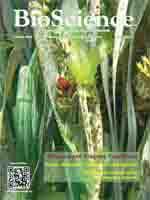“How do you make the biology we teach as exciting as the biology that we do?” was the challenging question posed by V. Celeste Carter to participants at the National Academy of Sciences convocation, “Thinking Evolutionarily: Evolution Education across the Life Sciences,” held in October. Carter, program director at the National Science Foundation, and others at the convocation discussed the converging efforts to improve biology education, to better motivate students, and to integrate evolution across learning experiences.
Simply regurgitating the biological knowledge generated by the scientific community or conducting “cookbook” laboratory experiments does not result in genuine understanding or excitement on the part of students, Carter and other speakers stressed. Instead, the nature and process of science, the unifying concepts and connections to the real world, and the problems encountered and discoveries made by scientists are what make biology come alive.
The story of biology is far more complex and fascinating than straight-forward facts or neatly labeled diagrams of structures and systems. Although exams can motivate students, the key to using these extrinsic motivators to increase student understanding lies in the way the assessments are designed and what they measure. Those involved in developing the new Advanced Placement Biology exam told convocation participants that the exam will include a greater number of higherorder-thinking questions and will ask students to demonstrate a solid understanding of evolution. It will require students to apply their knowledge in new ways and is a solid example of how exams of the future can drive improvements in student learning.
Although extrinsic motivators are certainly important, educators should also consider the role they play in igniting students' interests and creating lifelong learners who truly appreciate and understand biology and the nature of science. Field experiences are one of many ways to motivate students intrinsically, suggested David Mindell of the California Academy of Sciences. “We have a real disconnect between students and the natural environment,” commented Mindell. Allowing students to explore the outdoors through research projects is a proven way to encourage them to inquire deeply about the world in which they live. This in turn opens up opportunities for engaging them in more-sophisticated learning experiences.
Offering opportunities to explore and test scientific questions using primary data can also engage students, said John Jungck, professor at Beloit College and cofounder of the BioQUEST Curriculum Consortium. BioQUEST has a vast collection of teaching resources, including Beagle Investigations Return with Darwinian Data, which allows students “to develop investigations that explore evolutionary phenomena in a realistic manner” ( bioquest.org/products/files/2349_BIRDD.pdf).
Robert Pennock, professor at Michigan State University and coprincipal investigator of the BEACON Center for the Study of Evolution in Action, told the convocation participants, “If we hope to effect a change in attitude toward evolution and science in the public and in our students, we cannot simply wield more data; we must first reach their hearts and engage their minds.” He encouraged scientists to remember what initially got them interested in their fields and to find ways to spark similar enthusiasm in their students.
Others, including Paul Beardsley, formerly with the Biological Sciences Curriculum Study (BSCS) and currently at California State Polytechnic University, Pomona, said that if students see the relevance of biology to their own lives, they will be more motivated to delve into the subject matter and gain a deeper understanding of it. “Intrinsic motivation seems to be especially important for students that are underrepresented in the sciences and students that initially have low expectations for success,” he added. Resources such as the National Institutes of Health's Curriculum Supplement on evolution and medicine ( http://science.education.nih.gov/customers.nsf/HSEvolution.htm), developed by BSCS, can change students' perspectives of biology.
One place to find out more about motivating students is on the Science Education Research Center (SERC) at Carleton College's Web site ( http://serc.carleton.edu/NAGTWorkshops/affective/motivation.html). This compilation of resources includes information about types of motivation, suggested strategies with concrete examples, presentations from a SERC workshop on student motivation and attitudes, problems and suggested solutions, and a list of Web sites, books, and journal articles. The Web page is part of a larger resource called the “Affective Domain,” which contains a wealth of information about “attitudes, values, beliefs, opinions, interests, and motivation.”
Regardless of the strategies used, the more educators know about what motivates students and works to engage them, the better their students will be able to take ownership of their own learning. And that is essential if we are to increase the biological literacy of today's students, who are tomorrow's politicians, school board members, precollege teachers, and voters.





